
Every year from October 1st to 5th,Kitano Tenmangu Shrine's Zuiki Festival, one of Kyoto's autumn festivalswill be held. During the reign of Emperor Murakami (946-967)It started when Sugawara no Michizane carved a wooden statue in Dazaifu and brought it back to the gods of Nishinokyo to enshrine it.It is said.
At this time of year, the Kitano Tenmangu Otabisho in Nishinokyo, which is the parishioner area of Kitano Tenmangu, and its surroundings are filled with lanterns and stalls, creating a gorgeous atmosphere.
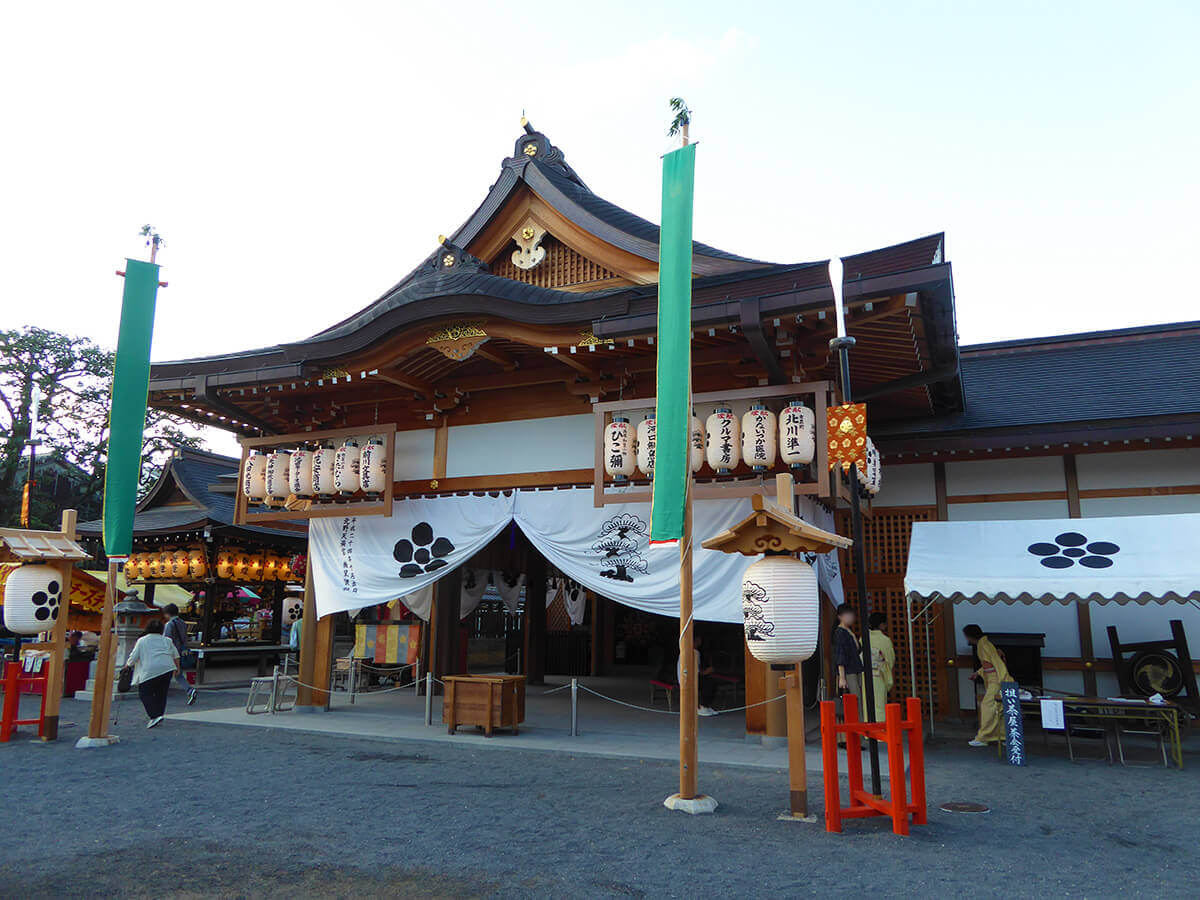
Kitano Tenmangu Shrine Otabisho
The main character of this festival is, of course,"Zuiki Mikoshi", a registered intangible folk cultural asset of Kyoto Cityright. It is a bit different from the mikoshi you see at other festivals.
"Zuiki" is a taro stem.About. The roof of the mikoshi is covered with zuiki harvested in the Nishinokyo area, and it is made of various kinds of vegetables, such as red crimson, paddy rice, barley, and red eggplant.They use a lot of agricultural products and take time and effort to handcraftIt isThe mikoshi covered with colorful ingredients is original, and the visual impact is amazing!
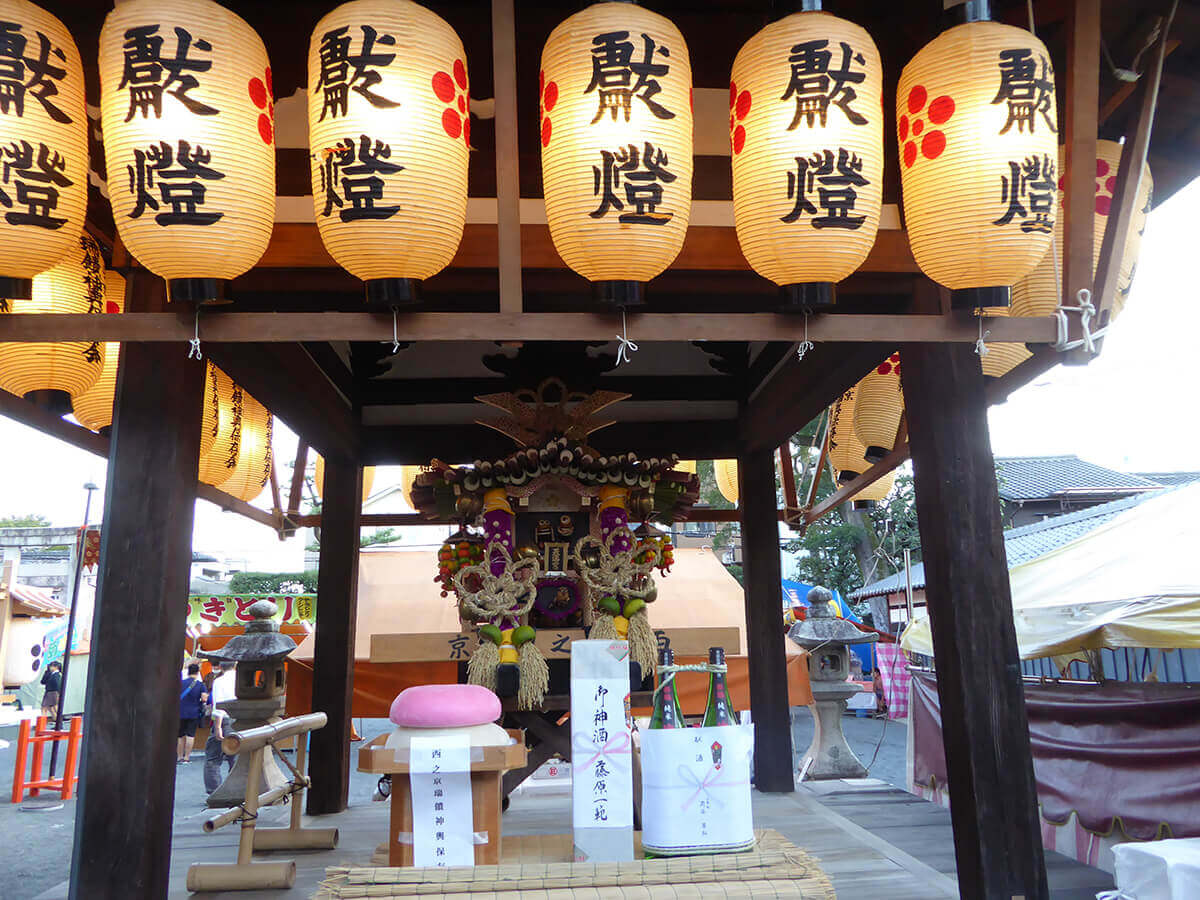
Zuiki Mikoshi
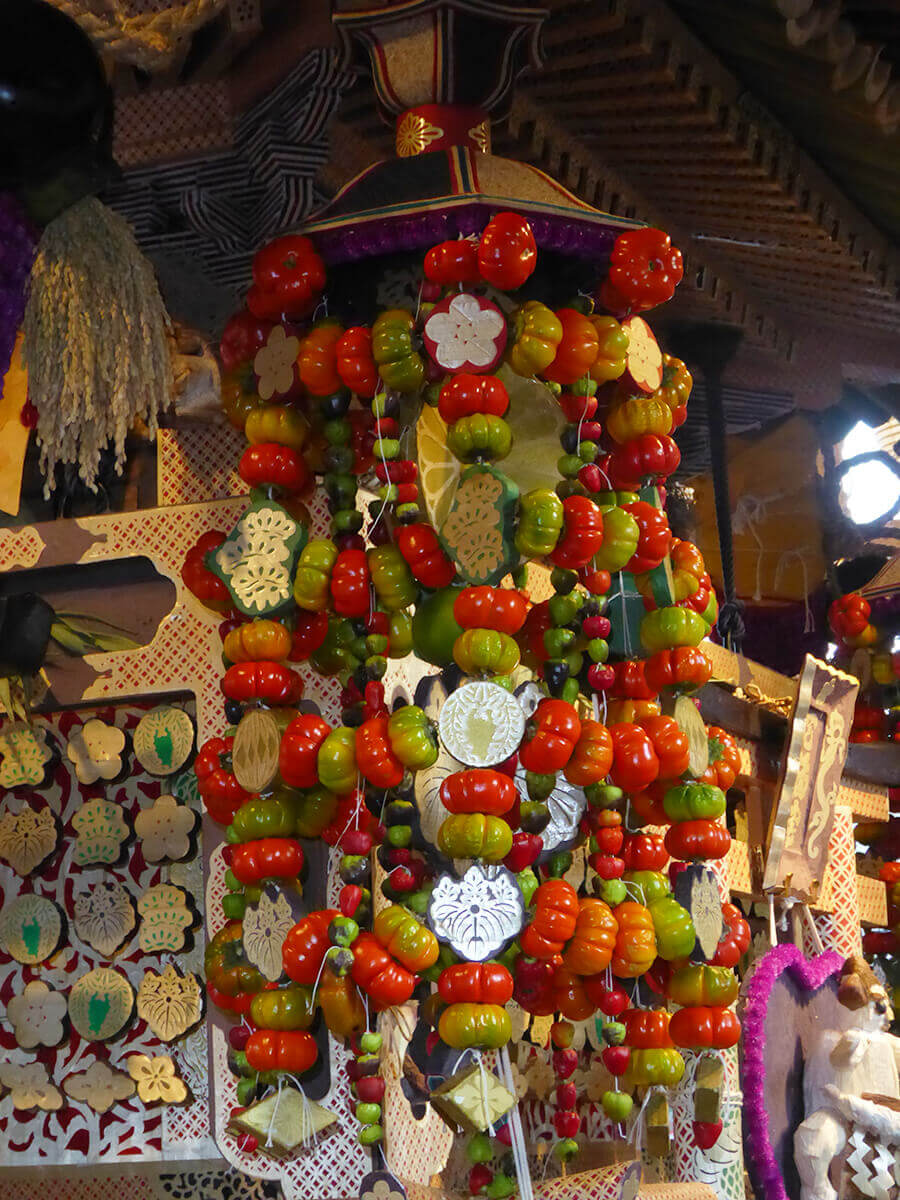
Yoraku is a
Made with red eggplant, yuzu, five-colored red pepper, etc.
The transoms of the portable shrines are decorated with dolls,Freely set the theme for each year and expressIt is Last year, the panda Xiang Shan, which was born at Ueno Zoo, attracted a lot of attention, and it was decorated with a cute panda design. In addition, it is elaborately designed with motifs of the popular shogi and the folktale Urashima Taro.
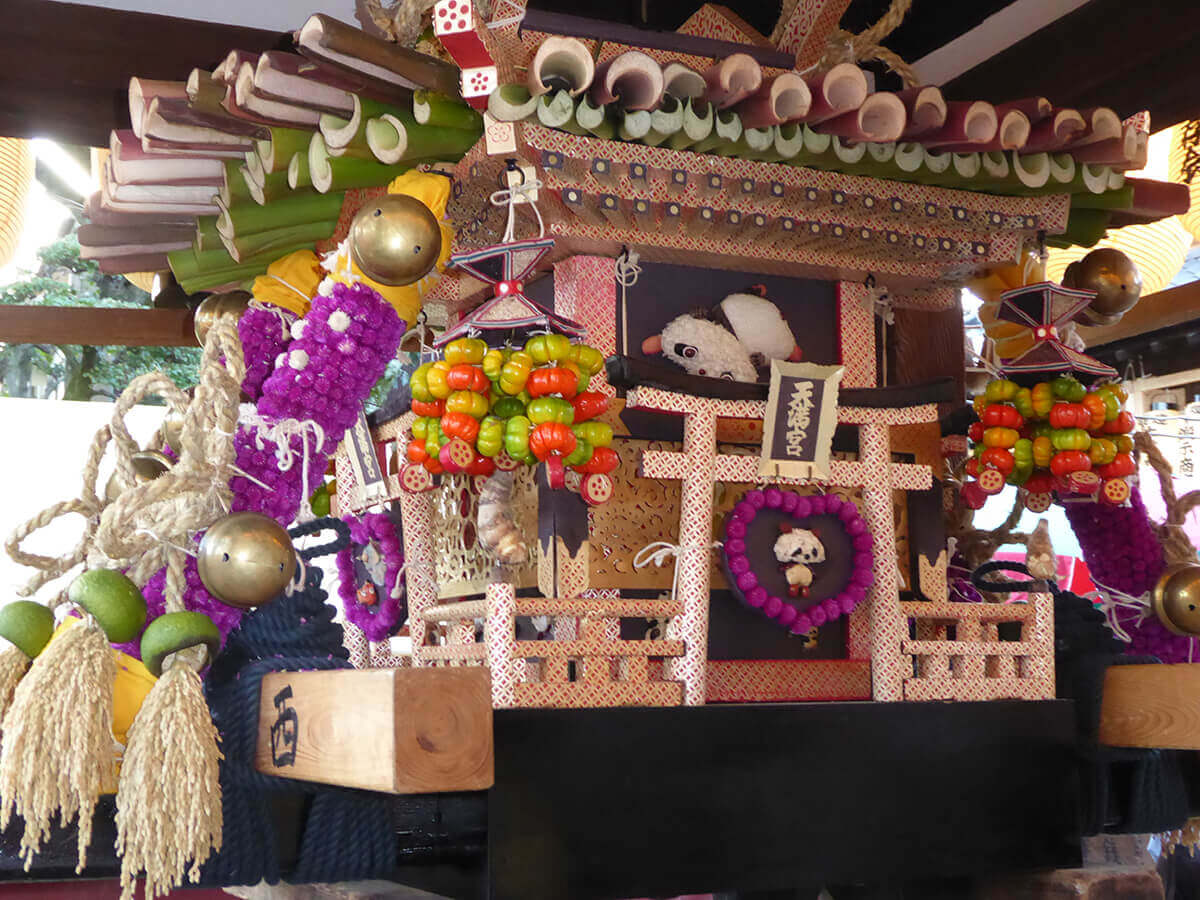
Last year's Zuiki Mikoshi.
Banda that became a hot topic in Keima and Ranma!
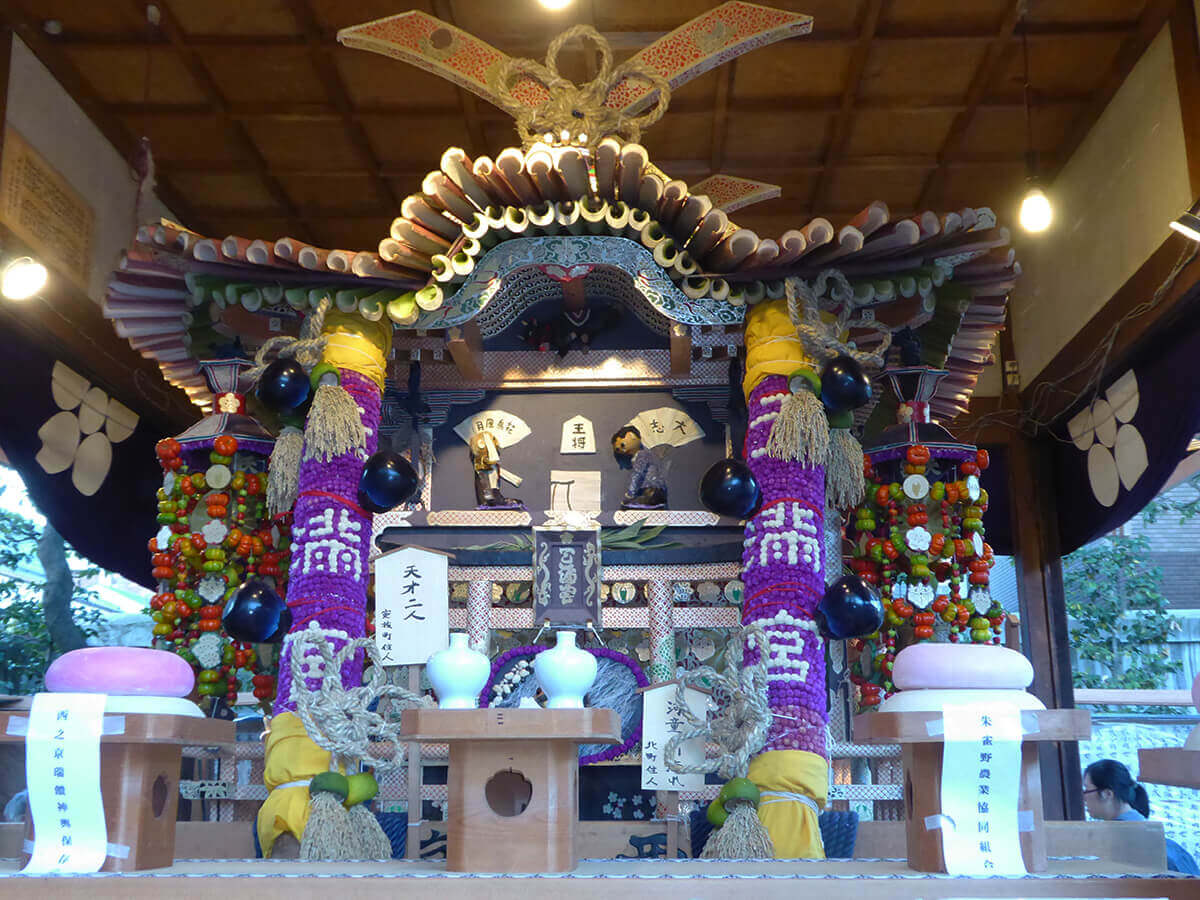
In the transom, shogi and shogi players who also became a hot topic
The ingredients are all, such as corn beard for hair and beans for eyes.uses natural ingredientsThat's what he said.While waiting for the Kankosai parade on the 4th, you can see the mikoshi at the Otabisho.
Since ancient times, taro, which is the fruit of taro, has a lot of sweet potatoes and sweet potatoes around the parent potato.Lucky charm for descendants prosperityhas been appreciated as person'sBecome a "head"It also contains a wish to do so. In addition, taro has a wide range of nutrition and efficacy,Foods that are grateful for recovering from eye strain, anti-aging, and strengthening bonesThere is also.
By the way, when the mikoshi parade at the Kankosai, which can be said to be the climax of the festival, sometimesShan, ShanThere is a sound. this is“I need it.”In front of the houses of the preservation society of the festival and the sponsors, the mikoshi is shaken up and down, and the metal fittings attached to the front and back of the long handle are ringed.The brightly colored mikoshi and the sound of the chime are gorgeous, adding to the atmosphere of the festival. It is said that the ringing of bells wards off evil spirits.I've heard that the tone of this ring also wards off evil spirits and purifies the place.
Every year, the Zuiki Mikoshi is newly made by the people of the Preservation Society. What happens after the festival is over and its role is finished?The fruit is dismantled and returned to the soil to pray for a bountiful harvest in the following year.That's it.From start to finish, a nature-friendly mikoshiThat's it.
Wishing for a bountiful autumn, I hope that this festival will continue to be passed down to future generations as a festival representative of autumn in Kyoto.
Tradition that exists everywhere in the city of Kyoto. It is not just a picture, it is secretly alive in this modern age and continues to coexist with people. The two of Office TO, who previously wrote a series of articles "Kyoto's Demon World Exploration" in the monthly magazine Leaf, explore the mysterious "different" world of Kyoto, which was created over 1200 years. I will unravel the story while actually visiting the place. .
 News
News Feature article
Feature article Featured event
Featured event